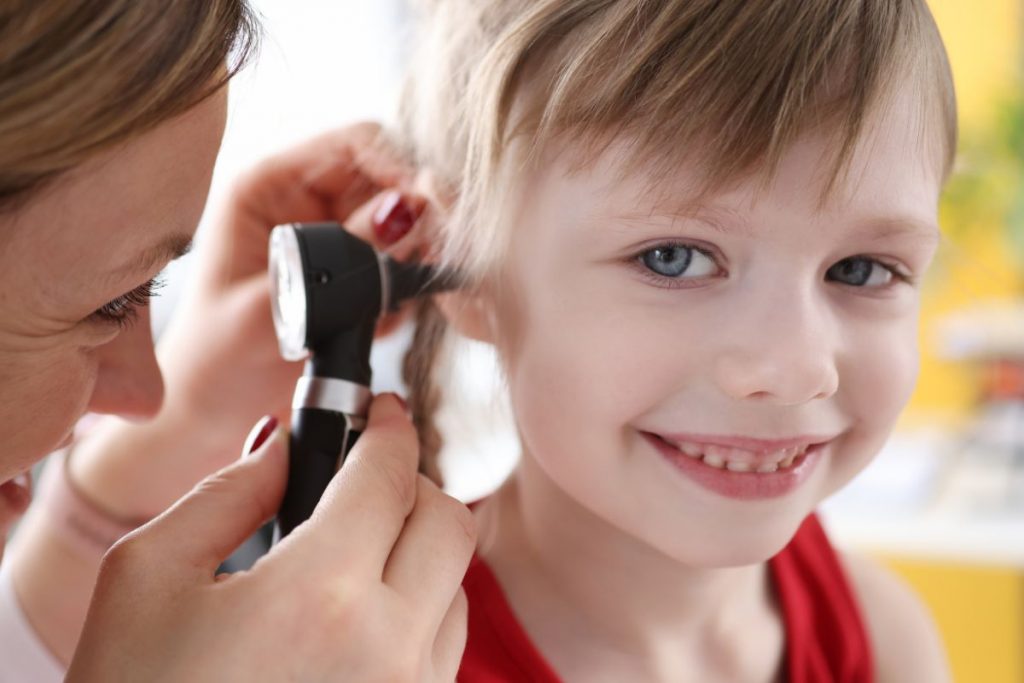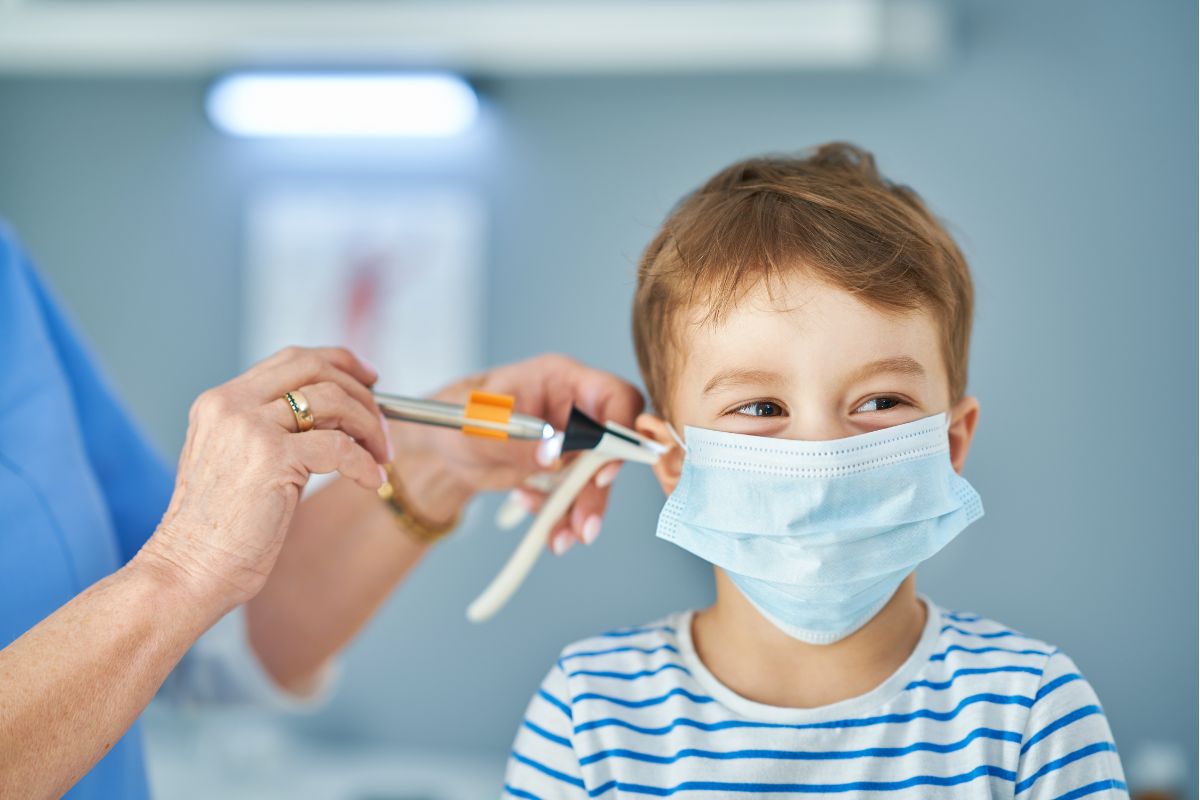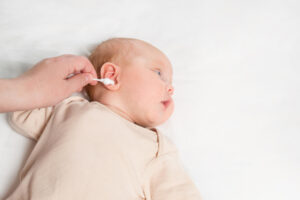Introduction to Ear Infections in Children

In the discourse presented here, Dr. Shree Rao provides Tips for Preventing Ear Infections in Children. She is the Best Doctor for Cochlear Implants.
In the realm of pediatric health, preventing ear infections in children is paramount to ensuring their overall well-being and quality of life. With a professional approach and under the guidance of medical experts, such as Dr. Shree Rao, caregivers embark on a journey of proactive measures aimed at safeguarding the delicate auditory systems of young ones. This comprehensive guide endeavors to shed light on effective strategies for preventing ear infections in children, offering valuable insights into hygiene practices, environmental factors, and lifestyle adjustments conducive to maintaining optimal ear health.
Maintaining Ear Hygiene
Proper ear hygiene is essential for preventing ear infections and promoting overall ear health in children. While it’s crucial to keep the ears clean, it’s equally important to avoid practices that could potentially damage the delicate structures of the ear canal.
Guidelines for Maintaining Ear Hygiene:-
- Outer Ear Cleaning: Parents should gently clean the outer ear using a soft, damp cloth to remove dirt and excess wax. However, they should avoid inserting cotton swabs or other objects into the ear canal, as this can push wax deeper and potentially damage the eardrum.
- Drying Ears: After bathing or swimming, it’s essential to dry the ears thoroughly to prevent moisture buildup, which can create an environment conducive to bacterial or fungal growth. Tipping the head to each side and gently pulling the earlobe can help drain water from the ear canal.
- Avoiding Ear Candling: Ear candling, a practice where a hollow candle is inserted into the ear canal and lit, is not recommended as it poses significant risks, including burns, ear canal obstruction, and punctured eardrums. It has no proven benefits and should be avoided.
- Protection from Loud Noise: Exposure to loud noises can damage the delicate structures of the inner ear and increase the risk of hearing loss and other ear-related problems. Children should wear ear protection, such as earmuffs or earplugs, when exposed to loud environments, such as concerts or sporting events.
- Regular Ear Check-ups: Parents should include ear examinations as part of their child’s routine medical check-ups. A healthcare professional can assess the child’s ear health, identify any signs of infection or other issues, and provide guidance on proper ear care practices.
- Seeking Medical Attention: If a child experiences ear pain, drainage from the ear, changes in hearing, or other concerning symptoms, parents should seek prompt medical attention. Early intervention can prevent complications and ensure timely treatment.
Promoting Good Hygiene Practices
Encouraging and instilling good hygiene practices in children is paramount for their overall health and well-being, including maintaining ear hygiene. Parents, caregivers, and educators play a crucial role in teaching children proper hygiene habits, which can significantly reduce the risk of ear infections and other health issues.
Here are some effective strategies for promoting good hygiene practices:-
- Education: Educate children about the importance of maintaining cleanliness, including ear hygiene, in a way that is age-appropriate and easy to understand. Use simple language and visuals to explain how germs can cause infections and how proper hygiene can prevent them.
- Lead by Example: Children often mimic the behavior of adults, so it’s essential for parents and caregivers to model good hygiene practices themselves. Demonstrating proper handwashing techniques, dental care, and ear hygiene reinforces the importance of these habits to children.
- Establish Routine: Incorporate hygiene practices into children’s daily routines, such as washing hands before meals, brushing teeth after meals, and drying ears after bathing or swimming. Consistency helps reinforce these habits and makes them part of children’s everyday activities.
- Make it Fun: Turn hygiene practices into enjoyable activities by using songs, games, or rewards to motivate children. For example, create a handwashing song with catchy lyrics or offer stickers as rewards for completing their hygiene routine.
- Provide Age-Appropriate Tools: Ensure children have access to age-appropriate tools and products for maintaining hygiene, such as soft toothbrushes, mild soap, and ear-drying towels. Teach children how to use these tools correctly and safely.
- Supervise and Encourage Independence: While it’s essential to supervise young children during hygiene activities, gradually encourage independence as they grow older. Allow children to take an active role in their hygiene routine, providing guidance and support as needed.
- Open Communication: Create an open and supportive environment where children feel comfortable asking questions about hygiene and expressing any concerns they may have. Address any misconceptions and provide accurate information to empower children to take control of their health.
- Celebrate Success: Celebrate children’s efforts and successes in maintaining good hygiene practices. Praise their commitment to cleanliness and acknowledge their progress, which reinforces positive behavior and encourages them to continue practicing good hygiene habits.
Preventing Exposure to Environmental Irritants

- Identify Potential Irritants: Educate children and their caregivers about common environmental irritants that can affect ear health, such as cigarette smoke, air pollution, and allergens like pollen or pet dander. Understanding these triggers empowers families to take proactive steps to minimize exposure.
- Create a Smoke-Free Environment: Smoking, whether firsthand or secondhand, can exacerbate ear problems and increase the risk of ear infections in children. Encourage parents and caregivers to maintain a smoke-free environment both indoors and outdoors to protect children from harmful tobacco smoke.
- Promote Good Indoor Air Quality: Ensure proper ventilation and air filtration systems in indoor spaces to reduce exposure to indoor air pollutants, such as dust, mold, and volatile organic compounds (VOCs). Regularly clean air ducts, use air purifiers, and avoid indoor activities that generate airborne particles.
- Limit Allergen Exposure: Allergens like pollen, dust mites, and pet dander can trigger allergic reactions and inflammation in the ears, leading to ear discomfort and infections. Encourage families to implement measures to minimize allergen exposure, such as using allergen-proof bedding, regularly vacuuming carpets and upholstery, and keeping pets out of sleeping areas.
- Practice Outdoor Safety: When spending time outdoors, especially during high pollen seasons or in areas with air pollution, take precautions to protect children from environmental irritants. Dress children in appropriate clothing to cover exposed skin and consider using pollen masks or respirators in areas with poor air quality.
- Avoid Harsh Chemicals: Certain cleaning products, personal care products, and cosmetics may contain harsh chemicals that can irritate the skin and mucous membranes, including those in the ears. Encourage families to choose gentle, fragrance-free products and avoid using products with known irritants or allergens.
- Promote Ear Protection: In environments where exposure to loud noises is common, such as concerts, sporting events, or construction sites, encourage the use of ear protection devices like earplugs or earmuffs to prevent noise-induced hearing damage. Teach children how to properly insert and wear ear protection to ensure effectiveness.
- Encourage Outdoor Play in Clean Environments: When engaging in outdoor activities, prioritize clean and safe environments that minimize exposure to pollutants and allergens. Choose parks, playgrounds, and recreational areas with well-maintained green spaces and limited traffic or industrial pollution.
Limiting Exposure to Cold and Flu Viruses
- Hand Hygiene: Emphasize the importance of frequent handwashing with soap and water, especially before meals, after using the restroom, and after coughing or sneezing. Proper hand hygiene reduces the transmission of viruses from contaminated surfaces to the mouth, nose, and eyes.
- Respiratory Etiquette: Educate children on proper respiratory etiquette, including covering their mouth and nose with a tissue or their elbow when coughing or sneezing. This prevents the spread of respiratory droplets containing viruses to others nearby.
- Avoiding Close Contact: Encourage children to maintain a safe distance from individuals showing symptoms of cold or flu, such as coughing, sneezing, or fever. Limiting close contact reduces the risk of virus transmission.
- Environmental Cleaning: Regularly clean and disinfect frequently touched surfaces and objects in the home, school, and other shared spaces. Pay particular attention to doorknobs, light switches, toys, and electronic devices to prevent the spread of viruses.
- Proper Ventilation: Ensure adequate ventilation in indoor spaces by opening windows and using air purifiers or fans to improve air circulation. Fresh air exchange helps dilute and remove airborne viruses, reducing the risk of respiratory infections.
- Healthy Habits: Promote overall health and immunity through balanced nutrition, regular exercise, adequate sleep, and stress management. A strong immune system is better equipped to defend against viral infections.
- Flu Vaccination: Encourage annual flu vaccination for children and adults as recommended by healthcare professionals. Flu vaccination reduces the risk of flu-related complications and helps protect against circulating flu viruses.
- Stay Informed: Stay informed about local outbreaks and public health recommendations regarding cold and flu prevention measures. Follow guidance from reputable sources such as the Centers for Disease Control and Prevention (CDC) and World Health Organization (WHO).
Monitoring for Allergic Reactions
- Know the Signs: Educate caregivers and children about the signs and symptoms of allergic reactions, which may include hives, swelling of the face or throat, difficulty breathing, wheezing, coughing, nausea, vomiting, or diarrhea. Prompt recognition of these symptoms is crucial for timely intervention.
- Identify Triggers: Be aware of common allergens that can trigger allergic reactions in children, such as certain foods (e.g., peanuts, milk, eggs), insect stings, pollen, dust mites, pet dander, mold, and certain medications. Understanding potential triggers helps in proactive avoidance.
- Observe Closely: Monitor children closely for any changes in behavior, appearance, or physical symptoms after exposure to known or suspected allergens. Be vigilant during meal times, outdoor activities, visits to new environments, and interactions with pets or other animals.
- Keep Medications Handy: Ensure that prescribed medications for allergic reactions, such as antihistamines or epinephrine auto-injectors (e.g., EpiPen), are readily available and accessible, especially when traveling or participating in outdoor activities. Teach caregivers and older children how to administer these medications appropriately.
- Communicate with Healthcare Providers: Maintain open communication with healthcare providers, including pediatricians, allergists, and school nurses, regarding any known allergies, previous allergic reactions, or concerns about potential allergens. Seek professional guidance on allergy testing and management strategies.
- Create an Allergy Action Plan: Develop a comprehensive allergy action plan in collaboration with healthcare providers, outlining specific steps to be taken in the event of an allergic reaction. Share this plan with caregivers, teachers, coaches, and other individuals responsible for the child’s care to ensure a coordinated response.
- Practice Prevention: Emphasize proactive measures to prevent exposure to known allergens, such as avoiding certain foods, implementing environmental controls (e.g., using hypoallergenic bedding, installing air purifiers), and taking precautions during outdoor activities (e.g., wearing protective clothing, avoiding peak pollen times).
- Seek Emergency Care if Needed: In cases of severe allergic reactions, such as anaphylaxis, administer epinephrine immediately if available and seek emergency medical assistance without delay. Prompt treatment is critical for preventing life-threatening complications and ensuring the child’s safety.
Conclusion - Tips for Preventing Ear Infections in Children
In conclusion, prioritizing preventive measures for ear infections in children is essential for promoting their long-term health and well-being. Under the guidance of healthcare professionals like Dr. Shree Rao, caregivers can implement proactive strategies to minimize the risk of these common ailments. By emphasizing the importance of hygiene, addressing environmental factors, and fostering healthy lifestyle habits, families can create a supportive environment conducive to optimal ear health. Through ongoing vigilance and collaboration with medical experts, parents and caregivers play a vital role in safeguarding children’s auditory systems and ensuring their overall wellness.

Why consult EarSurgeon, Dr. Shree Rao?
Dr. Shree Cuddapah Rao is acclaimed as one of the best pediatric ENT specialists in Hyderabad. With 10+ years of deep domain experience in the field of ENT, she is the director at Dr. Rao’s ENT Super Specialty Hospital. She underwent specialized training in Rhinoplasty / Facial Plastic surgery at Singapore General Hospital, Singapore. She also underwent advanced training in cochlear implant surgery under Padmashri Dr. Milind V Kirtane and had a Fellowship in a cochlear implant. Having performed over 200 successful cochlear implants for patients worldwide, Dr. Shree Cuddapah Rao is also the recipient of several prestigious accolades in the domain of ENT. Dr. Shree Rao is one of the best ent doctor in hyderabad, to book an appointment click here.
Are you looking for
then you have landed at right place!







